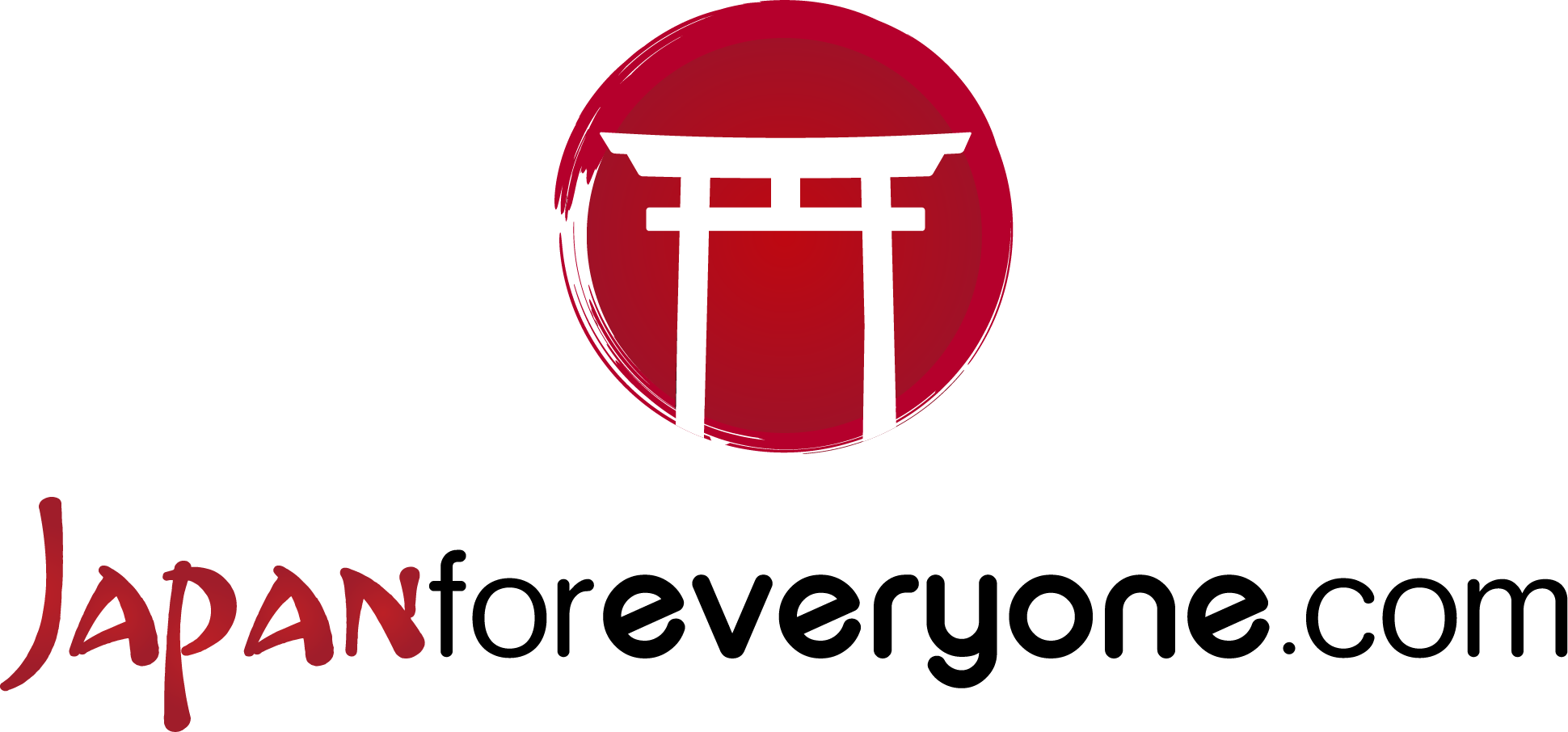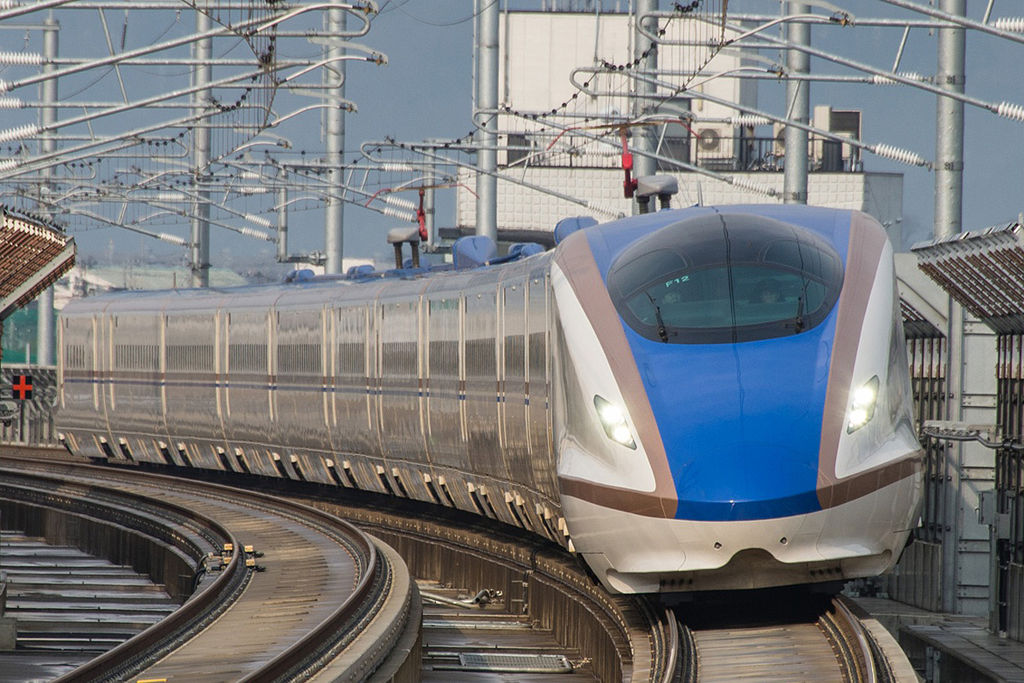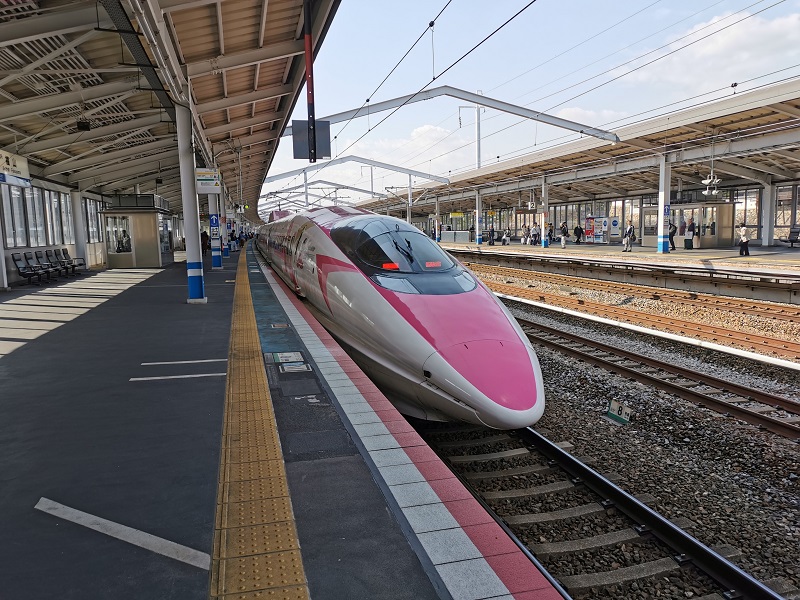Shinkansen
Shinkansen, literally ‘new railway trunk’, are the Japanese equivalent of our Red Arrow. They are also known as ‘bullet trains’. The first Shinkansen took off on 1 October 1964, a few days before the start of the Tokyo ’64 Olympics. Since then, several lines have been built, covering the entire Japanese archipelago.
The advantage of the Shinkansen is that they run on dedicated tracks, in practice they do not have to share them with local trains, as is the case in Italy for example. This also means that they have a separate section in stations. In fact, in order to access the Shinkansen tracks, one must have a ticket for this specific train.
Each line can have different services depending on the number of stops the train makes. Only the Nozomi and Mizuho services are NOT included in the Japan Rail Pass.
There are various models of Shinkansen, the most recent being the N700 and the E5 series, in service since 2007 and 2011 respectively.
The trains are divided into two classes, Green (first) and Ordinary (second). Second class carriages can have reserved and non-reserved seats.
If you have a Japan Rail Pass you can reserve seats on the train free of charge at all JR ticket offices (Midori no madoguchi).
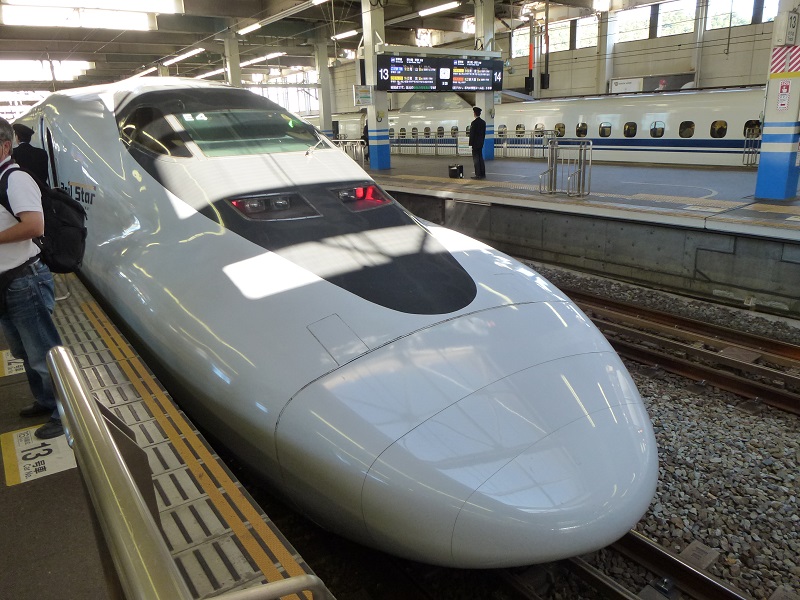
Photos by Japanforeveryone.com
This is the ticket with the booked seat . You can find the route (Kyoto-Tokyo), the date, departure time and arrival time of the train (7 October, departure 9:29am, arrival 12:10pm), train number (Hikari 514) and finally carriage and assigned seat (carriage 7, seat 2-B).
Like all Japanese trains, the seats are always oriented in the direction of travel of the train. In fact, there is a pedal under each seat that is used to turn them 180 degrees.
On some Shinkansen, there is also a refreshment service, an attendant will pass by with a trolley, from which you can buy drinks or the famous Bento (Japanese packed lunch).
A final curiosity is the conductor. Unlike the local trains, where there is no conductor, on the Shinkansen he will pass by to check that the seat where you are sitting is correct. So far so normal, the real curiosity is the fact that when the train departs, the conductor will make a very brief presentation and then every time he enters and exits the carriage, he will make a bow.
On Japan Transit Planner you will find all the Shinkansen timetables, for your convenience you can take out the Nozomi and Mizuho trains (not included in the Japan Rail Pass).
If you buy a single ticket for NON reserved seats, you can use it on all trains on the chosen route and day.
Luggage Transport on Shinkansen
On the line between Tokyo and Kagoshima, there are rules to be followed when transporting luggage. All luggage with total dimensions (A+B+C) between 160 and 250 cm (the longest side cannot exceed 200 cm and the maximum weight must be 30kg) must be booked with the seat. If you do not reserve a seat for your luggage, you will be charged a 1,000-yen cancellation fee on the train. Luggage over 250 cm cannot be transported on the Shinkansen. In this case they must be shipped.
If you have musical instruments, sports equipment or prams, reservations are not necessary.
Baggage reservations can be made online, at ticket machines or at staffed ticket offices. If you have a Japan Rail Pass remember to tell the attendant you have ‘oversized’ luggage.
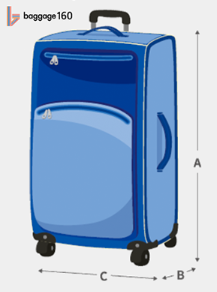
Each carriage has five seats (four seats in the Green cars) at the back for carrying luggage within these dimensions. Smaller luggage can be stored in the overhead bins or held in front of the legs. Shinkansen overhead bins are approximately 42 cm deep.
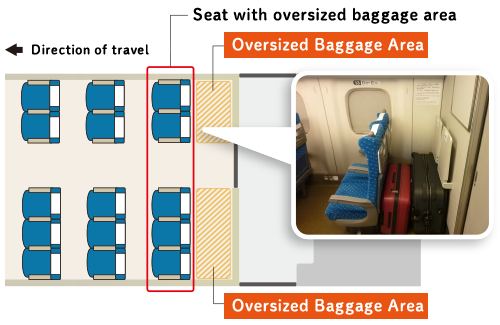

SHINKANSEN LINES
Tōkaidō Shinkansen
The Tōkaidō Shinkansen connects Tokyo station to Shin-Osaka station via Nagoya and Kyoto. It has a length of 515.4 km and was opened in 1964. It is operated by JR Central. The services on this line, from the fastest to the slowest, are called Nozomi, Hikari and Kodama.
The Nozomi shinkansen is NOT included in the Japan Rail Pass. Hikari and Kodama, on the other hand, are included.
spaceaero2, CC BY-SA 3.0, via Wikimedia Commons
Sanyō Shinkansen
The Sanyō Shinkansen connects Shin-Osaka to Hakata, passing through Kobe and Hiroshima. The line is 553.7 km long and was opened in 1972. It is operated by JR West. The services on this line, from the fastest to the slowest, are called Nozomi, Mizuho, Hikari, Sakura and Kodama.
The Nozomi and Mizuho shinkansen are NOT included in the Japan Rail Pass. Hikari, Sakura and Kodama, on the other hand, are included.
Corpse Reviver, CC BY-SA 3.0, via Wikimedia Commons
Tōhoku Shinkansen
The Tōhoku Shinkansen connects Tokyo to Shin-Aomori via Sendai and Morioka. The line is 674.9 km long and was opened in 1982. It is operated by JR East.
The services on this line are:
- Hayabusa (some runs coupled with Komachi to Morioka, where the Komachi train continues to Akita, while the Hayabusa continues to Shin-Aomori).
- Yamabiko (some runs coupled with Tsubasa to Fukushima, where the latter continues to Yamagata and Shinjo, while the Yamabiko goes to Morioka).
- Nasuno
Dabikun, CC BY-SA 3.0, via Wikimedia Commons
Jōetsu Shinkansen
The Jōetsu Shinkansen connects Tokyo to Niigata on the north coast. The line is 269.5 km long and was opened in 1982. It is operated by JR East.
© DAJF / Wikimedia Commons
Hokuriku Shinkansen
The Hokuriku Shinkansen connects Tokyo to Tsuruga and the line is 485 km long. The section between Kanazawa and Tsuruga (125 km) was opened on 16 March 2024. The intention then is to connect Tsuruga to Osaka, but the route has not yet been decided. It will be operated by JR East and JR West. Services on this line are called Kagayaki, Hakutaka, Asama and Tsurugi. On the Kagayaki service, reservations are mandatory because there are only reserved seats.
The Japan Rail Pass is valid on all these trains.
i北陸 (i Hokuriku), CC BY 2.1 JP, via Wikimedia Commons
Kyūshū Shinkansen
The Kyūshū Shinkansen connects Hakata (Fukuoka) to Kagoshima-Chuo. The line is 256.8 km long and opened in 2004. It is operated by JR Kyushu. Since 23 September 2022, the new section between Takeo-Onsen and Nagasaki (NishiKyushu Shinkansen) has been in operation. This new section saves about 30 minutes on the Fukuoka-Nagasaki route.
Rsa, CC BY-SA 3.0, via Wikimedia Commons
Sevenstars20, CC BY-SA 4.0, via Wikimedia Commons
Hokkaido Shinkansen
The Hokkaido Shinkansen connects Shin-Aomori to Shin-Hakodate Hokuto on the island of Hokkaido. The line is 148.9 km long. It is operated by JR Hokkaido. In 2012, work began on the continuation of the line to Sapporo and it is scheduled to open in 2035.
Sukhoi37, CC BY-SA 4.0, via Wikimedia Commons
Mini-Shinkansen Lines
Yamagata Shinkansen
The Yamagata Shinkansen is a branch line of the Tohoku line and connects Fukushima to Shinjo. The line is 148.6 km long and was opened in 1992. It is operated by JR East.
ttzshirasawa, CC BY 3.0, via Wikimedia Commons
Akita Shinkansen
The Akita Shinkansen is a branch line of the Tohoku line and connects Morioka to Akita in northern Japan. The line is 134.9 km long and opened in 1997. It is operated by JR East.
Jerôme Laborde, CC BY-SA 3.0, via Wikimedia Commons
PROJECTS
JR Maglev
The Maglev (magnetic levitation trains) superfast line has been planned for several years. The proposal is to build the new Chuo Shinkansen line (between Tokyo and Osaka). Work started in 2014 and the line between Tokyo and Nagoya is scheduled to open in 2027 and the last section to Osaka in 2045. The line will be between 438 km and 498 km long depending on the route chosen and the journey time between 67 and 74 minutes, compared to 147 minutes today.
江戸村のとくぞう, CC BY-SA 4.0, via Wikimedia Commons
